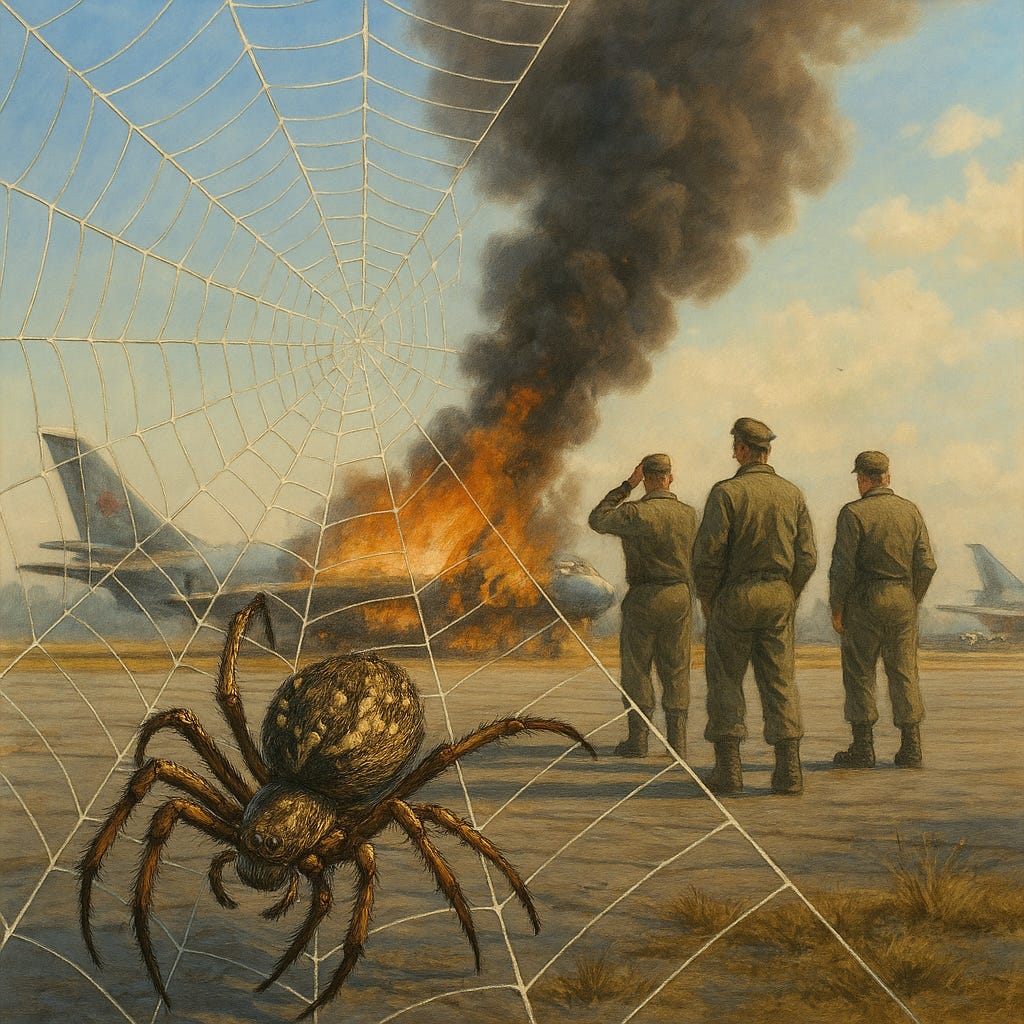Part IV: The Web Tightens
Russia Responds, Reels, and Reframes
This article is part of “Operation Spider’s Web,” a five-part report examining Ukraine’s long-range sabotage strike on Russian bomber bases.
The morning after Operation Spider’s Web, Russia scrambled to do what it always does when caught off guard: contain the blast, both literal and political.
Regional governors acknowledged drone strikes on multiple airbases—Belaya, Olenya, Dyagilevo—but said little about the damage. The Murmansk governor mentioned fires. The Irkutsk governor admitted a launch came from a truck near the base. But the Ministry of Defence stayed mostly quiet, offering a vague statement about repelling "terrorist attacks."
It wasn’t just the runways that were smoldering. Russia’s military credibility was, too.
The Blame Game Begins
By evening, Russian state media was in spin mode. The attacks were called "acts of terrorism" by the Kyiv regime. Arrests were announced. Video footage was shared showing debris and craters—but carefully cropped to avoid aircraft wreckage.
Ukraine's SBU, however, claimed that all Ukrainian personnel involved had been safely evacuated before launch. Any arrests now, they said, were just for show.
Pro-war Telegram channels were less restrained. One called the strike "Russia's Pearl Harbor." Another asked how NATO bombers could have been allowed to operate from inside Russia without anyone noticing. Fighterbomber, a channel with close ties to Russian air crews, expressed open rage.
Hitting Back—Sort Of
Russia responded with its own missile strikes on Ukrainian territory. An alleged drone control hub in Kharkiv. A training base in Dnipro. Russian officials claimed success, but provided little evidence. The damage appeared real, but scattered. It didn’t restore what had been lost.
At best, it was a reflex. At worst, a tantrum.
Fear, Stones, and Satellite Dishes
In Irkutsk, videos circulated of civilians throwing rocks at incoming drones. One governor said these citizens would be honored for their bravery. Others called it proof of just how unprepared Russia had become.
There were also hints of panic. Military bases across Russia reportedly began scanning for disguised trucks, sheds, or antenna arrays. Social media lit up with sightings. People were told to report anything unusual near airfields. Even satellite dishes.
What had been a high-value operation by Ukraine was now being reimagined by the Kremlin as a domestic threat. Not a drone problem. A trust problem.
Propaganda Under Strain
The Russian propaganda machine has grown adept at spinning defeats into noble setbacks. But this one hurt.
The Kremlin called it terrorism. But in any other war, this would be called what it was: a long-range commando raid, executed with precision, against a military target. In another era, the men and women behind it would be celebrated as special forces, not smeared as saboteurs.
The language is the propaganda. Russia doesn’t fear the drones. It fears what they expose.
It wasn’t a soldier dying for the motherland. It was billions of rubles of hardware turned to ash by $1000 drones launched from a parked truck. It was humiliation. It was a complete failure of Russian domestic security and intelligence. It demonstrated weakness.
To the Russian public, long-range bombers were supposed to symbolize strength, reach, and untouchability. Now, they symbolize something else: vulnerability.
The web had tightened. Not around Ukraine. Around Russia.
→ Continue to Part V: The Reckoning
or Return to Index



